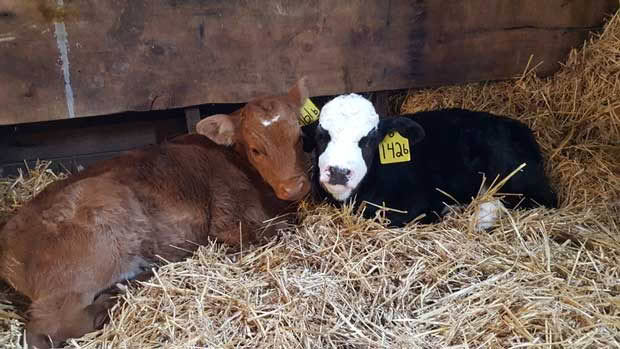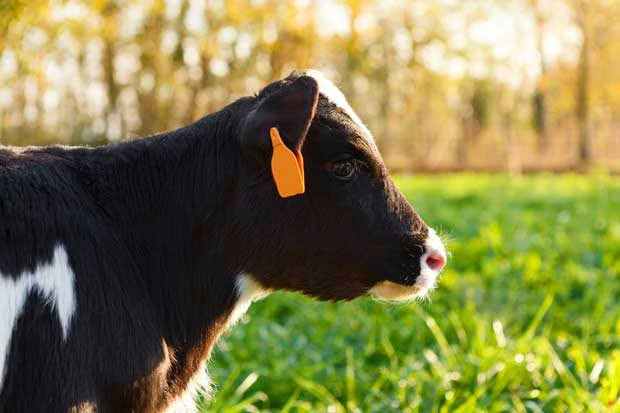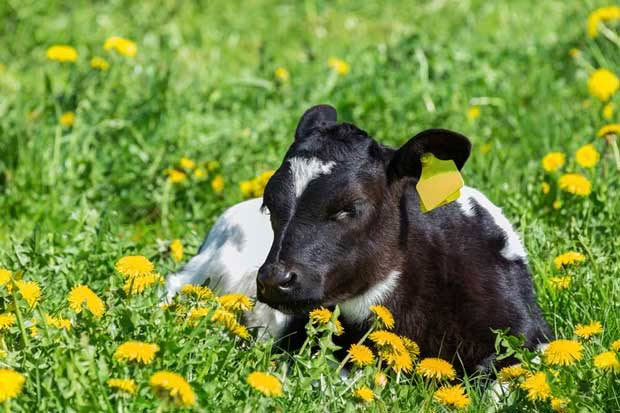Setting up for success in calf-rearing

It might seem an easy way to make money, but setting up a successful calf-rearing business is harder than it looks.
Words: Nadene Hall
For many new to a country lifestyle, the prospect of making a profit off the land is enticing. And one of the most obvious ways to do it would seem to be raising calves. Stories abound with the huge profits to be made and, done properly, it can be a good way to make some extra money.
However, to be successful, to raise healthy animals and to make a profit requires good facilities, good management practices, and a lot of hard work.
What makes calf rearing a more difficult option for the beginner is the competition from professional calf rearers, some of whom will have up to 5000 calves in one year pass through their hands. It’s hard to make a good go of it when your competitors not only have experience on their side, but economy of scale too.
With over 1.5 million calves raised in New Zealand annually, experienced farmers have the rearing process down to a fine art, to make sure they get maximum growth (for beef calves) or a top-producing animal (for dairy replacement calves), for the most economic cost possible.
For people coming into the industry, it may seem easy because these professionals have created a ‘recipe’ to follow. What is hard is having the experience to make the little day-to-day judgements and notice the small details that can make such a big difference come sale time.
One really important aspect is having the same person working with the animals every day. They are far more likely to notice when an animal is slightly off-colour, perhaps avoiding the need for a vet, and to sense when a calf not drinking or growing quite as it should.

REARING FACILITIES
Calf rearing shelter options: old buildings, sheds, barns, purpose-built barns/sheds, tunnel houses.
Talk to anyone who rears calves on a professional basis and before they talk to you about picking the right calf, colostrum intake or feeding options, they’ll talk about having good facilities.
One of the keys to making a profit and keeping young calves healthy is creating an environment that is as stress-free as possible, and a big key to achieving that is with hygienic, well designed facilities.
Ideally a building used for calf rearing should allow at least 1.5m² per calf and be partitioned to keep different age-groups of calves separate. It should also have an area where sick calves can be quarantined (at least two separate stalls some distance from the other calves) and treated. An old hay barn or implement shed may be ideal, or you may choose to build a dedicated calf rearing area.
The perfect shed is twice as deep as it is wide with an open front, so calves can be in the sun if they choose but protected from wind and rain if not. It is important that it be draught-free, so check with a candle at ground height before you get any animals.
If you are designing facilities from scratch, think about the orientation of the building (preferably facing the morning and midday sun), ventilation, humidity and drainage. Good drainage will help keep your facilities hygienic; you must be able to disinfect the floor and building between batches of calves, or in case of disease outbreak. For this reason, a concrete floor with a built-in drainage system so litter can make life easier – it can be scraped out and the floor thoroughly disinfected with something like Farm Fluid S. (This is a super concentrated virucidal disinfectant developed to control viruses, bacteria, fungi and mycoplasma, especially in areas with organic matter present).
If you do choose a concrete floor, put down a very deep layer of bedding (100-400mm thick) of post peelings, bark or shavings. Sawdust is another option but can retain a lot of moisture (which isn’t as hygienic). A thick layer of bedding is important as concrete is very cold to lie on, and being cold is a potential stress for calves that you want to avoid.
Once new calves are in a shed, disinfection should take place at least twice a week, if not every day. A special disinfectant called Virkon S can be sprayed in a pen and even on the calves (although avoid spraying them if possible, along with water and feed troughs). It has a very low toxicity level for people, animals and the environment while remaining a convenient and efficient way of controlling bacterial outbreaks.
Calf sheds should be a bio-secure area. Someone coming from another farm who must enter the area should change their clothes and shoes to avoid the spread of disease. Anyone entering the rearing area should soak their feet in disinfectant or change into clean shoes before entering. Ideally, no-one but the calf rearer should be in the building with young calves.
One final reason why a good shelter is important – it makes the working conditions of the main calf rearer much easier, meaning they are more likely to check on animals (and therefore pick up problems early) because it is safe, clean and easy to do so.
“Calves reared in dry shelters grow faster than those in wet and/or exposed areas. A shelter doesn’t have to be warm but it should have good ventilation, be draught-free and sunny, to avoid disease problems.”
TIPS FOR SUCCESSFUL CALF-REARING
– Maintain an “all-in, all-out” policy. Buy one lot of calves from one source and don’t add in any new or younger calves.
– Prevention is much safer and cheaper than cure. Make sure young calves receive (or have received) adequate colostrum in the first four days of life, quarantine an animal that is looking off-colour, keep everything scrupulously clean.
– Sickness is the biggest threat to your profit margin. By maintaining as stress-free an environment as possible, you don’t give infections of any kind an opportunity to take hold.

CALVES – COSTS AND CALCULATIONS
When you’re working out your final tally of costs, there’s quite a bit to think about.
– the price of each calf
– the agent’s commission
– transportation
– bedding
– housing construction/renovations
– straw and/or hay
– Milk powder/colostrum/bought-in whole milk
– Supplements including calf meal/pellets/pro-biotics etc
– Vet care, drugs, medicines
– Tags
– Power (for heating milk, lights)
– Your labour costs
Your biggest expense (not including the cost of a 4-day old calf or your labour) will be milk powder (about $55-$60 per calf) and calf meal ($55-$65 per calf).
Depending on the year, and not including labour or the cost of the calf, you can expect a calf to cost (on average) anywhere from $135-$150 each. This will vary from region to region and on the quality of the calves being bought.
A professional operation will hope to make a profit of $70-$100 per calf at weaning time. There is potential to make more of a profit if beef animals are able to be kept until around 18 months of age, presuming you have done everything correctly and raised quality animals.
As NZ Lifestyle Block’s farm expert Clive Dalton says, calf-rearing usually isn’t worth all the effort unless you are doing it as a hobby or as a serious business. If you want to make a profit, you need to have an accurate idea of costs.
CALF SELECTION
What to look for: a calf should be at least four days old, you should be confident they have had adequate colostrum (this is where knowing the breeder and their systems gives a calf-rearer a huge advantage), weigh 40kg or more (certainly not less than 35kg), be bright of eye and have a dry navel.
It really does help the beginner to have an experienced farmer or stock agent (or both) to advise on calf selection. This is where you make or break your profit margin and it often relies on the gut feeling of the buyer, to pick up on a calf that may not be completely healthy.
Cheap is not best when it comes to calves, so don’t buy the slightly depressed-looking calf that’s backed into a corner, because you feel sorry for it. A good, healthy calf will be a healthy, (profitable) weaner or adult. A sickly calf will never catch up, and will cost you significantly more to raise.
TREATMENT ON ARRIVAL
Calves will get to you in a distressed state, no matter how good their treatment: taken from their mum’s, transported to a yard, left in the yards, transported to you – it’s a lot for a baby to take in.
Their small, juvenile rumens will be very upset, which is why many professional calf-rearer’s don’t give a new arrival milk to start with. For the first 24 hours, newly arrived calves often receive an electrolyte drink instead– talk to your vet and get their recommendation.
When calves arrive, check their navels for infection and check all animals for any general health problems. If you are suspicious, get the animal quarantined immediately.
If you have a big group of claves, check for any that are slow drinkers and put them in a separate area so you can make sure they get enough feed.
HAVE CLEAR OBJECTIVES – WHAT ARE THE CALVES FOR?
Are the calves’ replacements for a dairy herd? The must be well reared to achieve good lifetime performance. These will be the best genetics in the herd and need special care.
Are they to be reared on a contract, to meet age and weight targets? This is serious business and you’ll have to meet these targets or lose money. This means your contract will have to predict prices a long way ahead.
Are the calves to be sold as “weaners” at the dairy weaner sales? These are usually around 4 months old and you won’t know what price you’ll get till the hammer falls. Prices depend on numbers offered, the grass growing season and many other things. At the later sales you can see what calves make at the early ones to base your predictions on. At the sale your calves will be on display beside hundreds of others, and this may affect the price if they don’t measure up.
Source: Dr Clive Dalton
 This article first appeared in NZ Lifestyle Block Magazine.
This article first appeared in NZ Lifestyle Block Magazine.
